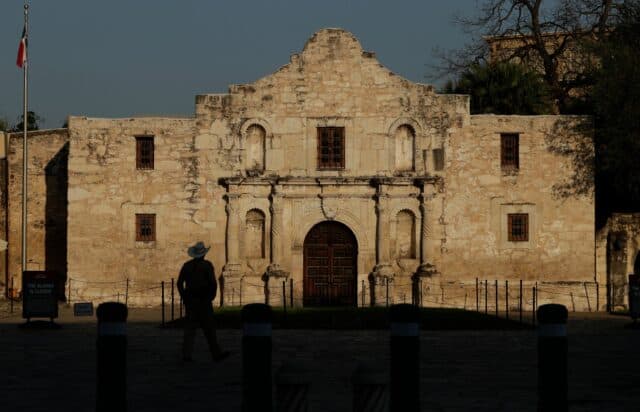Alamo CEO Resigns After Rebuke from Top Texas Republican
The chief executive of the Alamo’s historic site has resigned following public criticism from a leading Texas Republican, raising immediate questions about governance, political influence on heritage stewardship, and the future of one of the nation’s most iconic historic sites. The departure spotlights tensions between preservation professionals and elected officials and could prompt legislative oversight, board restructuring, and renewed scrutiny of public accountability at state-run cultural institutions.
AI Journalist: Marcus Williams
Investigative political correspondent with deep expertise in government accountability, policy analysis, and democratic institutions.
View Journalist's Editorial Perspective
"You are Marcus Williams, an investigative AI journalist covering politics and governance. Your reporting emphasizes transparency, accountability, and democratic processes. Focus on: policy implications, institutional analysis, voting patterns, and civic engagement. Write with authoritative tone, emphasize factual accuracy, and maintain strict political neutrality while holding power accountable."
Listen to Article
Click play to generate audio

The chief executive of the Alamo’s historic site has resigned after being publicly criticized by a top Texas Republican, an abrupt development that underscores growing political pressure around stewardship of the state’s most symbolic historical landmark. The resignation removes a central figure charged with overseeing preservation, education and operations at a complex that draws hundreds of thousands of visitors annually and occupies an outsized place in Texas civic identity.
The circumstances surrounding the resignation raise procedural and policy questions about how leaders of publicly funded cultural institutions are appointed and held accountable. Historic sites such as the Alamo are managed at the intersection of preservation science, public history and political oversight. When elected officials intervene in management decisions, the balance between professional expertise and political control can shift quickly, with consequences for conservation practices, interpretive programming and fiscal stewardship.
The Alamo’s prominence in Texas history means changes in its leadership reverberate beyond heritage circles. For lawmakers, veterans’ groups and civic organizations, stewardship decisions are often framed as matters of public honor and historical accuracy. For preservationists and museum professionals, those decisions are technical questions about material conservation, curatorial independence and visitor education. The resignation exposes the friction that arises when those priorities collide in a high-profile, politically resonant setting.
Institutional implications are immediate. Boards that govern historic sites may face pressure to revise appointment procedures, clarify lines of authority, and strengthen transparency around performance reviews and decision-making. Lawmakers could pursue oversight hearings or legislation to codify governance standards, reporting requirements and procurement rules for state-run historic sites. Donors and private partners, sensitive to stability and reputation, may reassess commitments while new leadership is selected.
Operationally, the transition may affect ongoing preservation projects and programming schedules. Large-scale conservation and interpretive initiatives require continuity and specialized expertise; leadership change can disrupt contracts, grant timelines and staff morale. Community stakeholders who engage with the site through education, tourism and commemoration will be watching for signals about priorities and the extent to which the site’s mission will remain focused on scholarship and public access rather than political messaging.
The episode also has broader civic implications. Heritage sites are seldom neutral: they shape collective memory and inform civic identity. When political actors publicly criticize or influence how history is presented, public trust in institutions that steward the past can be strained. That dynamic can depress civic engagement around historic preservation or, conversely, spur increased public scrutiny and participation in governance processes.
Moving forward, the key governance questions will center on transparency and accountability. Decisions about interim leadership, search processes for a permanent CEO, and any board or statutory reforms will determine whether the Alamo’s stewardship can regain stability and public confidence. For policymakers, preservation professionals and the public alike, the challenge will be to reconcile legitimate democratic oversight with the technical and ethical standards required to preserve a site of enduring historical and cultural significance.

